|
Books Should Be Free Loyal Books Free Public Domain Audiobooks & eBook Downloads |
|
|
Books Should Be Free Loyal Books Free Public Domain Audiobooks & eBook Downloads |
|
Top Authors |
|---|
|
Book type:
Sort by:
|
By: Francis Hopkinson Smith (1838-1915) | |
|---|---|
 Little Gray Lady
Little Gray Lady
As every Christmas for the last 20 years, the Little Gray Lady lights a candle in her room and spends the evening alone, thinking of a great mistake she has made so long ago. This year, however, things are to play out differently.. | |
By: Wayne Whipple (1856-1942) | |
|---|---|
 Story of Young Abraham Lincoln
Story of Young Abraham Lincoln
This is a careful and fascinating collection of interviews with people who knew Lincoln as a boy and young man. A glimpse into the type of person he was from the very beginning. "All the world loves a lover"—and Abraham Lincoln loved everybody. With all his brain and brawn, his real greatness was in his heart. He has been called "the Great-Heart of the White House," and there is little doubt that more people have heard about him than there are who have read of the original "Great-Heart" in "The Pilgrim's Progress... | |
By: Thomas Beer | |
|---|---|
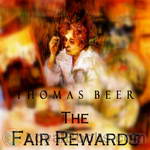 The Fair Rewards
The Fair Rewards
"The Fair Rewards" by Thomas Beer . . . is a really distinguished novel. The writing is far above the average: it has style and sophistication and personality, intermingled with a truly vivid show of imagination. It even borders on brilliancy, but it is a hard, cold, cynical sort of brilliancy that chills. It almost hurts . . . The title itself is indicative of cynicism. It is derived from Shakespeare's quotation, "These be the fair rewards of those that love," and it is an ironical reference, for Mark Walling, the blind, simple, loving idolater, in return for his great and unselfish devotion to Margot, reaps selfishness and ingratitude and lack of consideration... | |
By: Francis Coventry (1725-1754 or 1759) | |
|---|---|
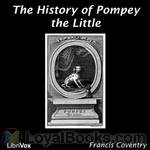 The History of Pompey the Little
The History of Pompey the Little
"Pompey, the son of Julio and Phyllis, was born A.D. 1735, at Bologna in Italy, a place famous for lap-dogs and sausages." At an early age he was carried away from the boudoir of his Italian mistress by Hillario, an English gentleman illustrious for his gallantries, who brought him to London.The rest of the history is really a chain of social episodes, each closed by the incident that Pompey becomes the property of some fresh person. In this way we find ourselves in a dozen successive scenes, each strongly contrasted with the others... | |
By: Hesiod | |
|---|---|
 Works and Days, The Theogony, and The Shield of Heracles
Works and Days, The Theogony, and The Shield of Heracles
Works and Days provides advice on agrarian matters and personal conduct. The Theogony explains the ancestry of the gods. The Shield of Heracles is the adventure of Heracles accepting an enemy's challenge to fight. | |
By: Cyrus Townsend Brady (1861-1920) | |
|---|---|
 And Thus He Came
And Thus He Came
These short stories, perhaps we might call them modern parables, are not the usual fare of warm and fuzzy Christmas stories (pleasing as those are) but rather life events and crises triggered by Christmas, present or imminent. Brady was a journalist, historian, adventure writer, and Episcopal priest. | |
By: Alice B. Emerson | |
|---|---|
 Ruth Fielding of the Red Mill
Ruth Fielding of the Red Mill
Brave, adventurous and loyal, recently-orphaned Ruth Fielding is sent to live with her estranged Uncle Jabez at the Red Mill in Cheslow, New York. A new town means making new friends, and the teenage Ruth quickly befriends the children of a wealthy merchant. But as the relationship between her and her uncle becomes strained and she attempts to become friends with a very disagreeable girl, will Ruth's cheery disposition be enough to get her through?This is the first of the Ruth Fielding series, with follows Ruth and her friends from adolescence into early adulthood. | |
 Ruth Fielding at Briarwood Hall
Ruth Fielding at Briarwood Hall
In this, the second book of the Ruth Fielding series, Ruth goes to boarding school with her best friend Helen. When they get there, Ruth starts her own sorority called the SweetBriars for the new girls. Her sweet group of girls conflicts with the two other sororities the Upedes and the Fussy Curls. In the midst of settling in to the new place, there is a campus rumor about a legend of the marble harp playing ominously at night. But when the French teacher is in a fright, will Ruth be able to solve this mystery?The Ruth Fielding series has influenced several other major series that came later, including Nancy Drew, the Dana Girls, and Beverly Gray. | |
By: Edith Birkhead (1889-1951) | |
|---|---|
 Tale of Terror: A Study of the Gothic Romance
Tale of Terror: A Study of the Gothic Romance
A seminal essay on the development of horror as a genre, highly influential on later writers. | |
By: Peter Fisher (1782-1848) | |
|---|---|
 History of New Brunswick
History of New Brunswick
Originally published in 1825 under the title: Sketches of New Brunswick : containing an account of the first settlement of the province, with a brief description of the country, climate, productions, inhabitants, government, rivers, towns, settlements, public institutions, trade, revenue, population, &c., by an inhabitant of the province. The value of this history is in the fact that it was written when the Province was still in its infancy. Although there had been a few small settlements established in New Brunswick prior to 1783, the main influx of settlers were Loyalists who chose to remove to the area from the United States following the American Revolution. | |
By: Frances Trego Montgomery (1858-1925) | |
|---|---|
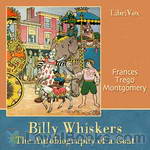 Billy Whiskers, the Autobiography of a Goat
Billy Whiskers, the Autobiography of a Goat
This delightful children's story can be enjoyed by kids and adults alike! A mischievous goat, Billy Whiskers, gets into trouble so often that the book could be named, "Billy Trouble Whiskers"! This humorous story will bring you many chuckles and give you a chance to get lost in Billy's adventures with childlike enthusiasm. From riding in a police car, to being a firehouse mascot, getting married, and finding himself a circus goat, Billy's adventures will certainly keep you entertained! (Introduction by Allyson Hester) | |
By: Zoe Anderson Norris | |
|---|---|
 The Way of the Wind
The Way of the Wind
From the comfort of the hills of Kentucky traveled Celia and her husband Seth to the desolate prairies of Kansas, where cyclones, tornadoes, and endless wind were to greet them. Always, there was the wind cutting across the plains as the young couple builds their home while working the soil, while Seth awaits the wise men of the east to begin building the magic city where he has staked his territory on the plains. But sometimes life plays cruel tricks upon us. Sometimes our hopes are dashed by happenstance... | |
By: Mary Roberts Rinehart (1876-1958) | |
|---|---|
 Oh, Well, You Know How Women Are and Isn't That Just Like a Man!
Oh, Well, You Know How Women Are and Isn't That Just Like a Man!
This warm, affectionate duet of essays by two of the early twentieth century's most popular writers is a bit dated but still entertaining. | |
By: 'Abdu’l-Bahá ‘Abbás (1844-1921) | |
|---|---|
 The Mysterious Forces of Civilization
The Mysterious Forces of Civilization
The Mysterious Forces of Civilization (Persian: Risálih-i-Madaníyyih) is a work written before 1875 by ‘Abbás Effendí, known as ‘Abdu’l-Bahá (the Servant of Bahá) (1844-1921). The Persian text was first lithographed in Bombay in 1882 and printed in Cairo in 1911. ‘Abdu’l-Bahá was the eldest son and appointed successor of Bahá’u’lláh, the Founder of the Bahá’í Faith. The original text of this work was written and published anonymously, and the first English translation (by Johanna Dawud) was published in London in 1910 and Chicago in 1918, under the title ‘Mysterious Forces of Civilization’ written by "an Eminent Bahai Philosopher... | |
By: Susanna Rowson (1762-1824) | |
|---|---|
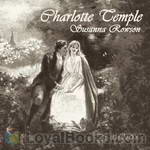 Charlotte Temple
Charlotte Temple
Charlotte Temple, a cautionary tale for young women, follows the unfortunate adventures of the eponymous heroine as she is seduced by a dashing soldier, Montraville. Influenced by both her lover and an unruly teacher at her boarding school, she is persuaded to run away to America, where she is eventually abandoned by Montraville after he becomes bored, leaving her alone and pregnant. First published in England in 1791, it went on to become America's bestselling novel, only being ousted by Harriet Beecher Stowe's Uncle Tom's Cabin. | |
By: Jim Kjelgaard (1910-1959) | |
|---|---|
 The Black Fawn
The Black Fawn
Bud Sloan was an orphan who had been 'sold out' of the orphanage to work on a farm once he'd been old enough to labor. The farm where he was to work was owned by an aging farmer and his wife who had raised a large family and were now left alone. One day, after his chores were done, Bud wandered into the woods nearby and with mouth agape, he noticed a newborn jet black fawn all alone and apparently confused in his new surroundings. Bud resolved that day that this baby fawn was just like himself, an orphan, and would be bound to him in spirit... | |
By: Franz Liszt (1811-1886) | |
|---|---|
 Life of Chopin
Life of Chopin
Chopin was a romantic era Polish composer. This work is a memoir by Liszt who knew Chopin both as man and artist. This memoir gives a unique understanding to the psychological character of the compositions of Chopin. It also offers Liszt's insight into some of Chopin's polonaises, especially the grand polonaise in F sharp minor. Liszt explains the strange emotion "ZAL" which is inclosed in his compositions. Then, presents a brief sketch on the lives of other great people in Chopin's circle. After that, Liszt discusses Chopin's fame and early life. Finally, Liszt gives a detailed account on Chopin's sufferings due to ill health and the unfortunate departure of the great composer. | |
By: Westminster Divines (1646) | |
|---|---|
 The Westminster Confession of Faith
The Westminster Confession of Faith
The Westminster Confession of Faith is a Reformed confession of faith, in the Calvinist theological tradition. Although drawn up by the 1646 Westminster Assembly, largely of the Church of England, it became and remains the 'subordinate standard' of doctrine in the Church of Scotland, and has been influential within Presbyterian churches worldwide. | |
By: Martha Summerhayes (1844-1911) | |
|---|---|
 Vanished Arizona: Recollections of the Army Life of a New England Woman
Vanished Arizona: Recollections of the Army Life of a New England Woman
This is the lively autobiography of Martha Summerhayes, the wife of an officer in the American Army. Here, she tells many stories about life and conditions in different camps and forts in which she lived with her expanding family, people along the way, and Journeys. | |
By: Andrew Carnegie (1835-1919) | |
|---|---|
 James Watt
James Watt
This biography of the inventor James Watt covers his early years, successes and failures, and legacy. | |
 Autobiography of Andrew Carnegie
Autobiography of Andrew Carnegie
This autobiography of Andrew Carnegie is a very well written and interesting history of one of the most wealthy men in the United states. He was born in Scotland in 1835 and emigrated to America in 1848. Among his many accomplishments and philanthropic works, he was an author, having written, besides this autobiography, Triumphant Democracy (1886; rev. ed. 1893), The Gospel of Wealth, a collection of essays (1900), The Empire of Business (1902), and Problems of To-day (1908)]. Although this autobiography was written in 1919, it was published posthumously in 1920. | |
By: Wassily Kandinsky (1866-1944) | |
|---|---|
 Concerning the Spiritual in Art
Concerning the Spiritual in Art
Published in 1911, Kandinsky's book compares the spiritual life of humanity to a pyramid -- the artist has a mission to lead others to the pinnacle with his work. The point of the pyramid is those few, great artists. It is a spiritual pyramid, advancing and ascending slowly even if it sometimes appears immobile. During decadent periods, the soul sinks to the bottom of the pyramid; humanity searches only for external success, ignoring spiritual forces. | |
By: Percy Marks (1891-1956) | |
|---|---|
 The Plastic Age
The Plastic Age
The Plastic Age (1924) is a novel by Percy Marks, which tells the story of co-eds at a fictional college called Sanford. With contents that covered or implied hazing, partying, and "petting", the book sold well enough to be the second best-selling novel of 1924. The following year, it was adapted into a film of the same name, starring Clara Bow. | |
By: Leonid Nikolayevich Andreyev (1871-1919) | |
|---|---|
 The Seven Who Were Hanged
The Seven Who Were Hanged
"I am very glad that "The Story of the Seven Who Were Hanged" will be read in English. The misfortune of us all is that we know so little, even nothing, about one another—neither about the soul, nor the life, the sufferings, the habits, the inclinations, the aspirations of one another. Literature, which I have the honor to serve, is dear to me just because the noblest task it sets before itself is that of wiping out boundaries and distances."-- Leonid Andreyev, in a letter to Herman Bernstein | |
 Man Who Found the Truth
Man Who Found the Truth
An old man, accused of having murdered his family as a young man, spends a lifetime in prison. With brilliant psychological insight so characteristic of Leonid Andreyev's work, we follow this man telling his story about his obsession with truth and lies and his religion of the iron grate, tinged with madness, and not necessarily reliable.. | |
By: Sōseki Natsume (1867-1916) | |
|---|---|
 Botchan
Botchan
Botchan is the story of a young math teacher from Tokyo whose first assignment takes him to a middle school in the country side. His arrival there is not very lucky: The pupils are bound to test his perseverance and cheerily comments every one of his perceived missteps. In the teacher's room, he soon finds himself in the middle of an intrigue between the jovial "Porcupine" and the fat "Hubbard Squash" on one side, and the effeminate "Red Shirt" and his follower "Clown" on the other. Will Botchan choose the right side in the end? Botchan - with morality as the main theme - is one of the most popular novels in Japan... | |
By: Mildred A. Wirt Benson (1905-2002) | |
|---|---|
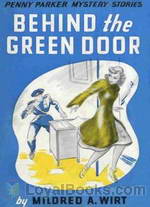 Behind the Green Door
Behind the Green Door
Penny Parker is a teen-aged sleuth and amateur reporter with an uncanny knack for uncovering and solving unusual, sometimes bizarre mysteries. The only daughter of widower Anthony Parker, publisher of the "Riverview Star," Penny has been raised to be self-sufficient, outspoken, innovative, and extraordinarily tenacious. Her cheerful, chatty manner belies a shrewd and keenly observant mind. Penny was the creation of Mildred A. Wirt, who was also the author of the original Nancy Drew series (under the pseudonym Carolyn Keene)... | |
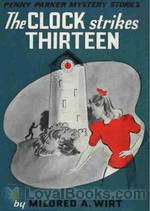 Clock Strikes Thirteen
Clock Strikes Thirteen
Penny Parker is a teen-aged sleuth and amateur reporter who has an uncanny knack for uncovering and solving unusual, sometimes bizarre mysteries. The only daughter of widower Anthony Parker, publisher of the "Riverview Star," Penny has been raised to be self-sufficient, outspoken, innovative, and extraordinarily tenacious. Her cheerful, chatty manner belies a shrewd and keenly observant mind. Penny was the creation of Mildred A. Wirt, who was also the author of the original Nancy Drew series (under the pseudonym Carolyn Keene)... | |
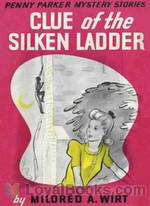 Clue of the Silken Ladder
Clue of the Silken Ladder
In THE CLUE OF THE SILKEN LADDER, Penny investigates multiple mysteries. What is the purpose of the singular silken ladder made by the secretive and somewhat sinister old Japanese curio shop owner? How can the "Riverview Star" obtain evidence that a popular troup of spiritualists really are heartless con artists? Last, who is perpetrating the gravity-defying burglaries that have rocked the town ? Meanwhile, the Parker housekeeper, Mrs. Weems, has come into an inheritance and plans to leave Riverview, much to the Parkers' dismay... | |
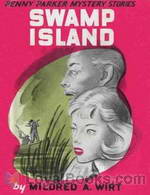 Swamp Island
Swamp Island
Late entry in the Penny Parker teen girl mystery series (1939-47) by one of the early ghostwriters (as Carolyn Keene) of Nancy Drew concerns an escaped embezzler, his revenge on the reporter whose articles helped convict him, and a long missing $50 grand. | |
By: August F. Jaccaci | |
|---|---|
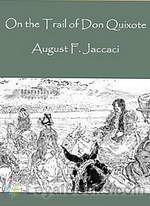 On the Trail of Don Quixote, Being a Record of Rambles in the Ancient Province of La Mancha
On the Trail of Don Quixote, Being a Record of Rambles in the Ancient Province of La Mancha
On the Trail of Don Quixote is an engaging 1890’s “record of rambles in the Ancient Province of La Mancha” by two artist friends, French author August Jaccaci and Spanish illustrator Daniel Vierge. “Both lovers of the book wherein are recounted the adventures of the good Knight and of his faithful Squire,” as Jaccaci explains, the two men set out to record -Jaccaci in evocative prose, and Vierge in pen and ink drawings - their exploration of the landmarks of Cervantes’ “immortal romance... | |
By: H. C. Bailey (1878-1961) | |
|---|---|
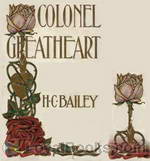 Colonel Greatheart
Colonel Greatheart
This is an unusual story of the English Civil War. There is a good account of the Battle of Newbury, and many historic figures appear: Cromwell (very prominent), Ireton, Prince Rupert, Charles I, Fairfax, and Lambert. The setting for this tale of men and arms is taken from the stirring days of the Bavaliers and the Roundheads, of Puritans and the so-called malignants; but the machines of war are rather in the background, while in the spotlight is a witching woman, a conqueror of hearts and a marker of destinies. The story tells of a woman's ambition that "urges valiant men to perilous deeds". | |
By: John Neihardt (1881-1973) | |
|---|---|
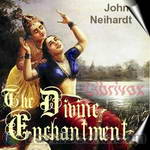 The Divine Enchantment
The Divine Enchantment
When the princess Devanaguy falls into a deep trance-like sleep, she is visited by the god Vishnu: who causes her to fall pregnant with his holy child, Christna.Devanaguy’s sleep is prolonged supernaturally by Vishnu: allowing the god to relate to her his divine secrets through a series of ecstatic visions. Among the mysteries revealed to Devanaguy, she is shown how the gods will shortly powerfully intervene directly in human affairs. When the princess finally re-awakens: she is awestruck by her experiences, and bursts into a spontaneous rhapsody of praise... | |
 The Song of Hugh Glass
The Song of Hugh Glass
This poem tells a story that begins in 1823 - just after the Leavenworth campaign against the Arikara Indians - and follows an expedition of Major Andrew Henry during a series of arduous journeys over the Trans-Missouri region.The poem focuses upon the relationship between two trappers - Hugh Glass and Jamie - who, after fighting and hunting together, consequently develop a close friendship. The poem revolves around the betrayal of Hugh by Jamie: who leaves Hugh alone "as good as dead" to die by the Missouri... | |
By: Henry Edward Krehbiel (1854-1923) | |
|---|---|
 How to Listen to Music
How to Listen to Music
This book is "not written for professional musicians, but for untaught lovers of the art". It gives broad instruction on composers, styles, instruments, venues - and when to believe the critics. | |
By: Margaret Sanger (1879-1966) | |
|---|---|
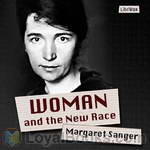 Woman and the New Race
Woman and the New Race
Margaret Sanger was an American sex educator and nurse who became one of the leading birth control activists of her time, having at one point, even served jail time for importing birth control pills, then illegal, into the United States. Woman and the New Race is her treatise on how the control of population size would not only free women from the bondage of forced motherhood, but would elevate all of society. The original fight for birth control was closely tied to the labor movement as well as the Eugenics movement, and her book provides fascinating insight to a mostly-forgotten turbulent battle recently fought in American history. | |
By: Edward Everett Hale (1822-1909) | |
|---|---|
 Christmas Eve and Christmas Day
Christmas Eve and Christmas Day
This is a collection of ten Christmas Stories, some of which have been published before. I have added a little essay, written on the occasion of the first Christmas celebrated by the King of Italy in Rome. | |
 Man Without A Country And Other Tales
Man Without A Country And Other Tales
Edward Everett Hale (1822 – 1909) was an American author, historian and Unitarian clergyman. Hale first came to notice as a writer in 1859, when he contributed the short story "My Double and How He Undid Me" to the Atlantic Monthly. He soon published other stories in the same periodical. His best known work was "The Man Without a Country", published in the Atlantic in 1863 and intended to strengthen support in the Civil War for the Union cause in the North. Though the story is set in the early 19th century, it is an allegory about the upheaval of the American Civil War... | |
By: Mary Louisa Molesworth (1839-1921) | |
|---|---|
 The Palace in the Garden
The Palace in the Garden
The Palace in the Garden is the engaging story of three orphans sent to live in the mysterious country cottage of Rosebuds. The inquisitive children piece together the unexpected mystery of the Palace in the garden & all that goes with it. The story has a few twists. This book put me in mind of the Secret Garden.(Introduction by ilianthe) | |
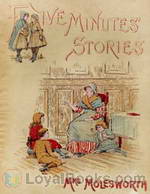 Five Minutes' Stories
Five Minutes' Stories
This is a collection of short stories for children. Listeners may wish to have a look at the text at Project Gutenberg to see the many illustrations accompanying each story. | |
By: Philip Melanchthon (1597-1560) | |
|---|---|
 The Augsburg Confession
The Augsburg Confession
The Augsburg Confession is the first and most fundamental Confession of the Lutheran Church. It was composed for a public reading at the Diet of Augsburg on June 25, 1530. Although written by Melanchthon, it was presented as the official answer of the undersigned German princes to the summons of Emperor Charles V. Two copies were presented on the same day, one in German, the other in Latin. This work translates a conflation of the German and Latin texts and was prepared for the Concordia Triglotta of 1921. (Introduction by Jonathan Lange) | |
By: Charles Norris Williamson | |
|---|---|
 The Golden Silence
The Golden Silence
Trying to get away from an engagement he had got himself into more or less against his will, Stephen Knight travels to Algiers to visit his old friend Nevill. On the Journey there he meets the charming and beautiful Victoria. She is on her way to Algiers to search for her sister, who had disappeared years ago after marrying an Arab nobleman. With the support of his friend, Stephen Knight decides to help the girl - but when she also disappears, the adventure begins... | |
By: Philip Melanchthon (1497-1560) | |
|---|---|
 A Treatise on the Power and Primacy of the Pope
A Treatise on the Power and Primacy of the Pope
The Treatise on the Power and Primacy of the Pope (1537) (Latin, Tractatus de Potestate et Primatu Papae), The Tractate for short, is the seventh Lutheran credal document of the Book of Concord. Philip Melanchthon, its author, completed it on February 17, 1537 during the assembly of princes and theologians in Smalcald. | |
By: Agnes von Blomberg Bensly | |
|---|---|
 Our Journey to Sinai
Our Journey to Sinai
Fortress-walled Saint Catherine's monastery on the Sinai peninsula has been a pilgrimage site since its founding by the Byzantine Emperor Justinian in the 6th century. According to tradition, the monastery sits at the base of the mountain where Moses received the Tablets of the Law. Set in rugged country, accessible in times past only by a many days journey by camel across barren desert, the monastery survived intact through the centuries, and, as a result, became a rich repository of religious history—told through its icons, mosaics, and the books and manuscripts in the monastery library... | |
By: Frank Henderson | |
|---|---|
 Six Years in the Prisons of England
Six Years in the Prisons of England
A Merchant talks about daily life inside prisons of England, describes routines and how prisoners are treated. He notes stories of how fellow prisoners came to be in prison, and his ideas about the penal system, its downfalls and ways to improve it. The reader can see similarities to the problems we still have in regarding "criminals" today. (Introduction by Elaine Webb) | |
By: Arthur Griffiths (1838-1908) | |
|---|---|
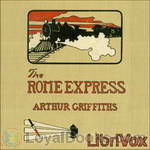 The Rome Express
The Rome Express
The passengers in the sleeping car of the Rome Express were just woken and informed that they will reach Paris soon, and a general bustle fills the train. Only one passenger cannot be awoken by the porter, no matter how loudly he knocks on the compartment door. At last, when the door is forced open, the occupant of the compartment is found dead - stabbed to the heart! The murderer must be found among the passengers... | |
 Passenger from Calais
Passenger from Calais
An army officer, and a mysterious lady with a maid and baby in tow, are the only passengers on the Engadine express from Calais. The lady is afraid that someone is following her. Who is she? And what is her strange package? One suspicious conversation and two private detectives later Colonel Basil Annesley is determined to find out! | |
By: Amelia Simmons (c. 1700s-1800s) | |
|---|---|
 American Cookery
American Cookery
American Cookery, by Amelia Simmons, was the first known cookbook written by an American, published in 1796. Until this time, the cookbooks printed and used in what became the United States were British cookbooks, so the importance of this book is obvious to American culinary history, and more generally, to the history of America. The full title of this book was: American Cookery, or the art of dressing viands, fish, poultry, and vegetables, and the best modes of making pastes, puffs, pies, tarts, puddings, custards, and preserves, and all kinds of cakes, from the imperial plum to plain cake: Adapted to this country, and all grades of life. (Description from Wikipedia) | |
By: May Sinclair (1863-1946) | |
|---|---|
 Mr. Waddington of Wyck
Mr. Waddington of Wyck
May Sinclair’s 1921 novel tells the story of the ridiculous Mr. Horatio Bysshe Waddington, a pompous, self-deluded poser making his way through life caring only for the impressions he makes on others. His long-suffering wife Fanny, his secretary Barbara, and the young scapegrace Ralph watch his daily performances with delighted, affectionate fascination as if they are spectators watching a play or scientists observing a new species, wondering every day how far he will go to fulfill his outrageous pretentions. As usual, Sinclair’s light, deceptively innocent prose camouflages a tale of sexual passions and human foibles with philosophical implications about her post-war world. | |
 Life and Death of Harriett Frean
Life and Death of Harriett Frean
Harriett Frean is a well-to-do, unmarried woman living a life of meaningless dependency, boredom, and unproductivity as she patiently cares for her aging parents, waiting for a man to marry. When her opportunity for Love finally comes, she is offered a moral dilemma: the man is engaged to her best friend. Should she sacrifice what, according to the priorities of the time, seems like her "one chance for happiness," or should she seize the moment? Can she make something meaningful of her life without... | |
 Three Sisters
Three Sisters
Fascinated as she was by the lives of the Brontë siblings, May Sinclair loosely based her subtly sensual, quietly insurrectionary 1914 novel The Three Sisters on the Haworth moor milieu of the three literary Brontë sisters. Alice, Gwenda, and Mary Cartaret are the daughters of the Vicar of Garth, an abusive father with rigid, selfish expectations for female behavior. Hope of rescue seems to dawn in the person of an idealistic young doctor in the village, but this is no Austen romance. Described... | |
 Romantic
Romantic
As a simple story told, "The Romantic" is one of Sinclair’s tightest and most compelling. Charlotte Redhead, a young British secretary, finds herself in a degrading extra-marital affair with her boss. In reaction, she renounces Sex and links herself platonically to a handsome young Bohemian (John Conway) she meets by chance, tramping in the fields. Together, under a powerful romantic excitement, the two rush off to Belgium in the early weeks of World War I, having organized their own little volunteer ambulance corps... | |
 Tysons
Tysons
Another frank May Sinclair exploration of fin de siècle English love and sex, marriage and adultery, "The Tysons" is the story of the caddish Nevill Tyson and his beautiful but frivolous young wife Molly. Sinclair uses a different narrative voice than we hear in much of her fiction, a sort of witty Jane Austen archness as she dissects the characters of the provincial village Drayton Parva. As always, she demonstrates an intriguing mixture of Victorian prudishness and modern free-thinking, particularly in her rendering of the sexual escapades of her characters... | |
 Audrey Craven
Audrey Craven
In May Sinclair’s remarkable first novel, Audrey Craven is a beautiful young woman who has by her idiosyncracies acquired a thoroughly undeserved reputation for originality. In fact, Audrey is a shallow, selfish, malleable person of negligible intelligence, with a fastidious horror of anyone who might be considered a nobody. Her pursuit of the stimulation of extraordinary minds (and her persistent fantasy of being somebody’s Muse) brings her into contact with serious women and men representing the profoundest passions of art, religion, science, and love... | |
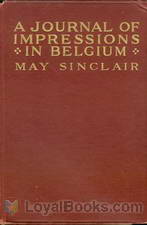 Journal of Impressions in Belgium
Journal of Impressions in Belgium
In 1914, at the age of 51, the novelist and poet May Sinclair volunteered to leave the comforts of England to go to the Western Front, joining the Munro Ambulance Corps ministering to wounded Belgian soldiers in Flanders. Her experiences in the Great War, brief and traumatizing as they were, permeated the prose and poetry she wrote after this time. Witness of great human pain and tragedy, Sinclair was in serious danger of her life on multiple occasions. This journal makes no attempt to be anything more than a journal: a lucid, simple, heart-breaking account of war at first hand. | |
 Anne Severn and the Fieldings
Anne Severn and the Fieldings
Written in an era of cheap, formulaic romantic fiction, the nuanced, seditious, quietly erotic novels of May Sinclair stand out like literature from another era entirely. There is romance in “Anne Severn & the Fieldings,” but it’s romance of the best and profoundest kind, set in the context of authentic human personalities and tragic historical events. The motherless Anne Severn is adopted into the Fielding family and grows up in intimate friendship with the three Fielding sons, all of whom love her... | |
By: William H. Hudson (1841-1922) | |
|---|---|
 A Crystal Age
A Crystal Age
A Crystal Age is a utopian novel written by W. H. Hudson, first published in 1887. The book has been called a "significant S-F milestone" and has been noted for its anticipation of the "modern ecological mysticism" that would evolve a century later. | |
By: S. Baring-Gould (1834-1924) | |
|---|---|
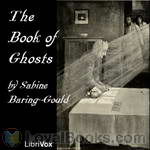 The Book of Ghosts
The Book of Ghosts
Reverend Sabine Baring-Gould (1834-1924) was an English hagiographer, antiquarian, novelist and eclectic scholar. During his life, he published more than 100 books, among them this collection of ghost stories. | |
 Curious Myths of the Middle Ages
Curious Myths of the Middle Ages
This volume is an example of Sabine Baring-Gould's extensive research into the middle ages. This volume of 12 curiosities was one of Baring-Gould's most successful publications. | |
By: William H. Hudson (1841-1922) | |
|---|---|
 Shepherd's Life; Impressions Of The South Wiltshire Downs
Shepherd's Life; Impressions Of The South Wiltshire Downs
Hudson wrote this classic work in 1910; it is admiringly mentioned by many other writers. It focuses on the memories of a head shepherd, Caleb Bawcombe, so it is concerned with the period of mid to late nineteenth century rural Wiltshire, a county in England. This pleasant engaging book contains rural wisdom, natural history, farming practices, human characters, and more | |
By: Robert Stawell Ball (1840-1913) | |
|---|---|
 Great Astronomers
Great Astronomers
Of all the natural sciences there is not one which offers such sublime objects to the attention of the inquirer as does the science of astronomy. From the earliest ages the study of the stars has exercised the same fascination as it possesses at the present day. Among the most primitive peoples, the movements of the sun, the moon, and the stars commanded attention from their supposed influence on human affairs. From the days of Hipparchus down to the present hour the science of astronomy has steadily grown... | |
By: Martin Andersen Nexø (1869-1954) | |
|---|---|
 Pelle the Conqueror
Pelle the Conqueror
When the first part of "Pelle Erobreren" (Pelle the Conqueror) appeared in 1906, its author, Martin Andersen Nexo, was practically unknown even in his native country, save to a few literary people who knew that he had written some volumes of stories and a book full of sunshiny reminiscences from Spain. And even now, after his great success with "Pelle," very little is known about the writer. He was born in 1869 in one of the poorest quarters of Copenhagen, but spent his boyhood in his beloved island Bornholm, in the Baltic, in or near the town, Nexo, from which his final name is derived... | |
By: Amelia E. Barr (1831-1919) | |
|---|---|
 Maid of Maiden Lane
Maid of Maiden Lane
The Maid of Maiden lane is a wonderful love story in which Mrs. Barr intertwines the hot political and social issues that were occurring in America during the last decade of the 18th century with an excellent love story plot. Some of those issues include: the moral dilemma and debate over the French Revolution, and how that event touched the lives of the immigrants in America; the prejudices between the immigrants from England, and those from France or Holland, and how those animosities affected the ordinary lives of the people; and the political debate over titles, foreign policy, and such things(for example)as where the capital of the nation was to reside, New York or Philadelphia... | |
By: Dorothy Richardson (1873-1957) | |
|---|---|
 Pointed Roofs
Pointed Roofs
Miriam Henderson is one of what novelist Dolf Wyllarde (in her great work, The Pathway of the Pioneer) termed "nous autres," i.e., young gentlewomen who must venture forth and earn their living after their fathers have been financially ruined. Also, she has read Villette; she thus applies for and is offered a job teaching conversational English at a girls' school, albeit in Germany rather than France. Pointed Roofs describes her year abroad, as she endeavors to make her way in the hotbed of seething female personalities that populate the school, overseen by her employer, the formidable Fraulein... | |
By: St. Catherine of Genoa (1447-1510) | |
|---|---|
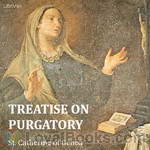 Treatise on Purgatory
Treatise on Purgatory
Saint Catherine of Genoa (Caterina Fieschi Adorno, born Genoa 1447 – 15 September 1510) is an Italian Roman Catholic saint and mystic, admired for her work among the sick and the poor. She was a member of the noble Fieschi family, and spent most of her life and her means serving the sick, especially during the plague which ravaged Genoa in 1497 and 1501. She died in that city in 1510.In 1551, 41 years after her death, a book about her life and teaching was published, entitled Libro de la vita mirabile et dottrina santa de la Beata Caterinetta de Genoa... | |
By: Pliny the Younger (61 - ca. 112) | |
|---|---|
 Letters of Pliny
Letters of Pliny
The largest surviving body of Pliny's work is his Epistulae (Letters), a series of personal missives directed to his friends, associates and the Emperor Trajan. These letters are a unique testimony of Roman administrative history and everyday life in the 1st century CE. Especially noteworthy among the letters are two in which he describes the eruption of Mount Vesuvius in August 79, during which his uncle Pliny the Elder died (65 and 66 in this edition), and one in which he asks the Emperor for instructions regarding official policy concerning Christians (Trajan Letter 97)... | |
By: William Wood (1864-1947) | |
|---|---|
 Chronicles of Canada Volume 31 - All Afloat: A Chronicle of Craft and Waterways
Chronicles of Canada Volume 31 - All Afloat: A Chronicle of Craft and Waterways
No exhaustive Canadian 'water history' can possibly be attempted here. That would require a series of its own. But at least a first attempt will be made to give some general idea of what such a history would contain in fuller detail: of the kayaks and canoes the Eskimos and Indians used before the white man came, and use today; of the small craft moved by oar and sail that slowly displaced those moved only by the paddle; of the sailing vessels proper, and how they plied along Canadian waterways,... | |
By: Conrad Aiken (1889-1973) | |
|---|---|
 House of Dust: A Symphony
House of Dust: A Symphony
The House of Dust is a poem written in the four-movement format of a classical symphony. Hauntingly beautiful despite its bleak post-World War I depictions of human mortality and loss, the poem develops its movements around central images such as Japanese ukiyo-e ("floating world") woodblock prints, touching the reader's senses with endlessly evocative allusions to wind, sea, and weather. In this underlying Japanese sensibility and dependence on central perceptual images, Aiken's poem is similar to poetry of Imagists of the time such as Amy Lowell. Also deeply influenced by the concepts of modern psychology, Aiken delved deeply into individual human identity and emotion. | |
By: Francis Key Howard (1826-1872) | |
|---|---|
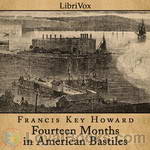 Fourteen Months in American Bastiles
Fourteen Months in American Bastiles
Francis Key Howard recounts in this book his life as a political prisoner of the United States. He points out that he was held captive at the same location where his grandfather was inspired to write the national anthem about the "land of the free," which makes a very stunning contrast. The sufferings that were imposed on him by the Union forces had the effect of solidifying his determination to resist unjust governmental dictates. (Introduction by Katie Riley) | |
By: Lord George Gordon Byron (1788-1824) | |
|---|---|
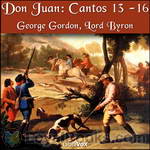 Don Juan, Cantos 13 -16
Don Juan, Cantos 13 -16
These are the last four Cantos of his mock epic that Byron completed in the year before his death at the age of 36 in Messolonghi, Greece, where he had gone to fight for the nationalists against the Ottoman Empire. Juan, now in England, is invited to spend the autumn with a hunting party at the ancient country seat of Lord Henry and Lady Adeline Amundeville. There, he meets the most intriguing of the Byronic heroines, Aurora Raby, and is visited by a ghost with ample breasts (!). That is the narrative outline but hardly the focus of the last Cantos... | |
By: Charles Waddell Chesnutt (1858-1932) | |
|---|---|
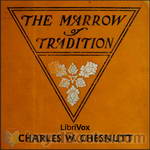 The Marrow of Tradition
The Marrow of Tradition
In The Marrow of Tradition, Charles W. Chesnutt--using the 1898 Wilmington, North Carolina massacre as a backdrop--probes and exposes the raw nerves and internal machinery of racism in the post-Reconstruction-era South; explores how miscegenation, caste, gender and the idea of white supremacy informed Jim Crow laws; and unflinchingly revisits the most brutal of terror tactics, mob lynchings. (Introduction by James K. White) | |
 House Behind the Cedars
House Behind the Cedars
In this, Chesnutt's first novel, he tells the tragic story of love set against a backdrop of racism, miscegenation and “passing” during the period spanning the antebellum and reconstruction eras in American history. And through his use of the vernacular prevalent in the South of that time, Chesnutt lent a compassionate voice to a group that America did not want to hear. More broadly, however, Chesnutt illustrated, in this character play, the vast and perhaps insurmountable debt this country continues to pay for the sins of slavery. | |
 Colonel's Dream
Colonel's Dream
In this novel, Chesnutt described the hopelessness of Reconstruction in a post-Civil War South that was bent on reestablishing the former status quo and rebuilding itself as a region of the United States where new forms of "slavery" would replace the old. This novel illustrated how race hatred and the impotence of a reluctant Federal Government trumped the rule of law, ultimately setting the stage for the rise of institutions such as Jim Crow, lynching, chain gangs and work farms--all established with the intent of disenfranchising African Americans. | |
By: A.P. Herbert (1890-1971) | |
|---|---|
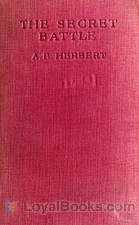 The Secret Battle
The Secret Battle
Like many soldiers at the beginning of their military careers, Harry Penrose has romantic ideas of climbing the ranks and attaining hero status. However, while stationed at Gallipoli, the realities of war begin to take their toll on Penrose, not only physically, but also mentally where the war has become a 'battle of the mind.' This is his story as related by a fellow soldier, as well as the story of the campaign at Gallipoli which is vividly portrayed from the author's own personal experiences.During his tenure as an officer, Penrose slowly asserts himself; the war takes a toll on his personality, but he begins to live up to his early dreams of heroism... | |
By: Henry Watson Wilbur (1851-1914) | |
|---|---|
 President Lincoln's Attitude Towards Slavery and Emancipation
President Lincoln's Attitude Towards Slavery and Emancipation
A review of events prior to, during and following the American Civil War bringing an insightful perspective on Lincoln's true attitude toward slavery and emancipation. | |
By: Helen Leah Reed (1860-1926) | |
|---|---|
 Brenda, Her School and Her Club
Brenda, Her School and Her Club
"Brenda was used to getting her own way. Her parents and older sisters spoiled her, her friends followed her lead, servants obeyed her, and she was truly beautiful. That was so, until her cousin Julia (who is everything that she is not) came to live with her family. And that's when our book starts." | |
By: Frank Wedekind (1864-1918) | |
|---|---|
 Pandora's Box
Pandora's Box
| |
 Earth Spirit
Earth Spirit
Earth Spirit (1895) (Erdgeist) is a play by the German dramatist Frank Wedekind. It forms the first part of his pairing of 'Lulu' plays (the second is Pandora's Box [1904]), both of which depict a society "riven by the demands of lust and greed". Together with Pandora's Box, Wedekind's play formed the basis for the silent film Pandora's Box (1929) starring Louise Brooks and the opera Lulu by Alban Berg in 1935 (premiered posthumously in 1937). The eponymous "earth spirit" of this play is Lulu, who Wedekind described as a woman "created to stir up great disaster... | |
By: William Ruschenberger (1807-1895) | |
|---|---|
 The Elements of Botany
The Elements of Botany
The Elements of Botany is one of seven in a Series of First Books of Natural History Prepared for the Use of Schools and Colleges. It is a succinct little textbook that presents a solid introduction to plant science. | |
By: Edward V. Lucas (1868-1938) | |
|---|---|
 Highways and Byways in Sussex
Highways and Byways in Sussex
A very personal and opinionated wander through the Sussex of around 1900, illustrated with anecdotes, literary and poetic quotations, gravestone epitaphs and a gentle sense of humour. The author colours the countryside with his nostalgia for times past and regret for the encroaching future, his resentment of churches with locked doors, and his love of deer parks, ruined castles and the silent hills.(I must add my apologies for my attempts at the Sussex dialect in the chapter on that subject.)[This book is of Reading Grade of 9... | |
By: Laura E. Richards (1850-1943) | |
|---|---|
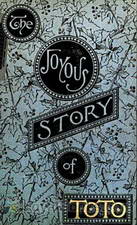 Joyous Story of Toto
Joyous Story of Toto
Toto and his grandmother become friends with many of the Forest Folk (such as Bruin, Racoon, Woodchuck, and Cracker the Squirrel) in this first Toto book. | |
By: William A Alcott (1798-1859) | |
|---|---|
 Young Woman's Guide to Excellence
Young Woman's Guide to Excellence
Much of this guide for young women is still valuable today. Despite mentions of tight lacing and other out of date matters, it contains many timeless principles. (Bria Snow) | |
By: Randall Garrett (1927-1987) | |
|---|---|
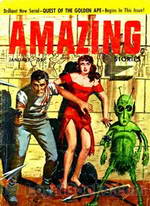 Quest of the Golden Ape
Quest of the Golden Ape
How could this man awaken with no past—no childhood—no recollection except of a vague world of terror from which his mother cried out for vengeance and the slaughter of his own people stood as a monument of infamy? Image is an illustration from the Gutenberg text. | |
By: Ellis Meredith (1865-1955) | |
|---|---|
 The Master-Knot of Human Fate
The Master-Knot of Human Fate
A tale of two people, and their search for answers to unknown questions. Adam and Robin find themselves inexplicably alone after an apparent natural cataclysm, and are compelled to learn how to survive, how to endure, but most importantly to themselves, how to enjoy, understand their new roles in life, and understand each other. (Introduction by Roger Melin) | |
By: Hippolyte Dreyfus-Barney (1873-1928) | |
|---|---|
 The Universal Religion: Bahaism - Its Rise and Social Import
The Universal Religion: Bahaism - Its Rise and Social Import
“Bahaism is not a new religion,” writes Hippolyte Dreyfus-Barney, “It is religion renewed… it does not pretend to represent the whole Truth; on the contrary, it recognises Truth in fundamental principles which are the basis of all former dispensations, and which for that very reason form the standpoint of concord too long lost sight of. And it requires people to renounce ancient superstitions, to abandon the dead letter in order to be penetrated by the living and vivifying spirit, then by... | |
By: Marie Corelli (1855-1924) | |
|---|---|
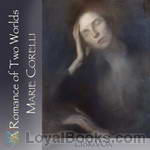 A Romance of Two Worlds
A Romance of Two Worlds
A Romance of Two Worlds starts with a young heroine telling her story of a debilitating illness that includes depression and thoughts of suicide. Her doctor is unable to help her and sends her off on a holiday where she meets a mystical character by the name of Raffello Cellini, a famous Italian artist. Cellini offers her a strange potion which immediately puts her into a tranquil slumber, in which she experiences divine visions. | |
By: Christina Rossetti (1830-1894) | |
|---|---|
 Long Ago
Long Ago
LibriVox volunteers bring you 12 recordings of Long Ago by Christina G. Rossetti. This was the Weekly Poetry project for December 9, 2012.Christina Georgina Rossetti (5 December 1830 – 29 December 1894) was an English poet who wrote a variety of romantic, devotional, and children's poems. She is perhaps best known for her long poem Goblin Market, her love poem Remember, and for the words of the Christmas carol In the Bleak Midwinter. | |
By: A.E.W. Mason | |
|---|---|
 At the Villa Rose
At the Villa Rose
Harry Wethermill, the brilliant young scientist, a graduate of Oxford and Munich, has made a fortune from his inventions, and is taking a vacation at Aix-les-Bains. There he meets, and immediately falls in love with, the young and beautiful Celia Harland, who serves as companion to the aging but warm-hearted Madam Dauvray of Paris. All this is observed by Julius Ricardo, a retired financier from the City of London, who spends every August at Aix, expecting there to find a pleasant and peaceful life... | |
By: A. E. W. Mason (1865-1948) | |
|---|---|
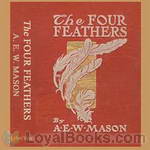 The Four Feathers
The Four Feathers
The Four Feathers is a 1902 adventure novel by British writer A.E.W. Mason that has inspired many films of the same title.The novel tells the story of British officer, Harry Feversham, who resigns his commission in the East Surrey Regiment just prior to Sir Garnet Wolseley's 1882 expedition to Egypt to suppress the rising of Urabi Pasha. He is faced with censure from three of his comrades for cowardice, signified by the delivery of three white feathers to him, from Captain Trench and Lieutenants Castleton and Willoughby, and the loss of the support of his Irish fiancée, Ethne Eustace, who presents him with the fourth feather... | |
By: Lord Redesdale (1837-1916) | |
|---|---|
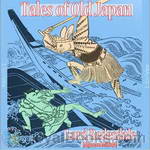 Tales of Old Japan
Tales of Old Japan
Tales of Old Japan by Lord Redesdale is a collection of short stories focusing on Japanese life of the Edo period (1603 - 1868). It contains a number of classic Japanese stories, fairy tales, and other folklore; as well as Japanese sermons and non-fiction pieces on special ceremonies in Japanese life, such as marriage and harakiri, as observed by Lord Redesdale. The best know story of these is "The Forty-seven Ronins" a true account of samurai revenge as it happened at the beginning of 18th century Japan... | |
By: Mary Esther Miller MacGregor (1876-1961) | |
|---|---|
 Black-Bearded Barbarian
Black-Bearded Barbarian
A fictionalized biography of George Mackay (1844-1901), an influential Presbyterian missionary in northern Taiwan. | |
By: Friedrich Wieck (1785-1873) | |
|---|---|
 Piano and Song
Piano and Song
This book talks about teaching, learning and performing on the piano in a delightful style, alternating between conversation and instruction. As he was the father of Clara Schumann and Robert Schumann's teacher, need I say more? | |
By: Jacques-Henri Bernardin de Saint-Pierre | |
|---|---|
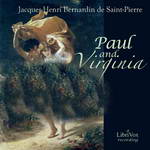 Paul and Virginia
Paul and Virginia
Paul and Virginia was first published in 1787. The novel's title characters are very good friends since birth who fall in love, but sadly die when the ship Le Saint-Geran is wrecked. The story is set in the island of Mauritius under French rule, then named Île de France, which the author had visited. Written on the eve of the French Revolution, the novel is hailed as Bernardin's finest work. It records the fate of a child of nature corrupted by the false, artificial sentimentality that prevailed at the time among the upper classes of France. | |
By: William T. Hornaday (1854-1937) | |
|---|---|
 Extermination of the American Bison
Extermination of the American Bison
The American bison (Bison bison), also commonly known as the American buffalo, is a North American species of bison that once roamed the grasslands of North America in massive herds, became nearly extinct by a combination of commercial hunting and slaughter in the 19th century and introduction of bovine diseases from domestic cattle. William T. Hornaday’s advocacy is credited with preserving the American bison from extinction. This book, originally published in 1887, gives Mr. Hornaday's evidence of the Bison's impending extinction. (Adapted from Wikipedia by Ann Boulais) | |
By: Henry Oyen (1882-1921) | |
|---|---|
 The Snow-Burner
The Snow-Burner
The Snow-Burner is what the Native Americans called Reivers, and it was a rough and tumble life in the land where Reivers chose to live up to his name. The name was attributed to Reivers upon his proof after arriving in the north country because of his ability to defeat all perceived enemies in whatever means was necessary; whether by brute force and tough action, or by sheer cunning which he had gained living in the city in his earlier days. When assigned to oversee a group of foreigners in a work camp, he treated them with utter cruelty... | |
By: Basil King (1859-1928) | |
|---|---|
 Wild Olive
Wild Olive
Norrie Ford, having been unfairly convicted of murder, has escaped. A lucky chance finds him being rescued by a mysterious girl (the Wild Olive of the title), who sets him up with a new life under a new name in Argentina. He makes such a success of his time there that he is posted back to New York by the company he works for – but not before he has become engaged to be married. Back in New York, he meets up again with the Wild Olive . . . | |
By: Ellis Parker Butler (1869-1937) | |
|---|---|
 Cheerful Smugglers
Cheerful Smugglers
Saving for the baby's education: how can a young family be disciplined so as to regularly put money in the pig (bank)? Why, put a tariff on all items coming into the house, just like the U.S. Government does/did for items coming into the country! But the devil is in the details; what about taxing items brought in by visitors? Is the housemaid herself a taxable item? What items really are 'necessaries' versus luxuries? When visitors arrive these guests stoop to either 'smuggling' in their luggage items to avoid having to pay up to 30% of the value, or wear only what they came dressed in... | |
By: Harrison Weir (1824-1906) | |
|---|---|
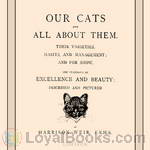 Our Cats and All About Them
Our Cats and All About Them
The Englishman Harrison Weir organized the first cat show in England in 1871. In 1887 he founded the National Cat Club and was its first President and Show Manager until his resignation in 1890.Our Cats and all about them is concerned with cats and all about them. It describes numerous breeds of cats and what to look for in a cat show champion, and deals with the general management and common diseases of cats, as well as how to raise healthy kittens. But there is also a hodge podge of cat related stories, games, nursery rhymes, superstitions, as well as a list of cat lovers and a chapter of "The Cat in Shakespeare". | |
By: Sister Mary Jean Dorcy (1914-1988) | |
|---|---|
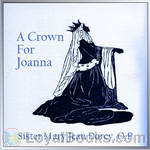 A Crown for Joanna
A Crown for Joanna
She was born a princess, heir to her father’s kingdom of Portugal, and she might at will have reigned from almost any throne in Europe. But instead of this, she made what to her world seemed a thoroughly mad choice – for she chose to have a throne in heaven. Today those scepters are dust which she would not accept, and as Blessed Joanna of Portugal she possesses a throne imperishable… This children’s biography of Blessed Joanna of Portugal was written by Sister Mary Jean Dorcy, a Catholic Dominican Nun... | |
By: Marie de France | |
|---|---|
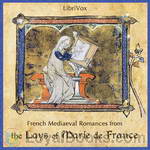 French Mediaeval Romances from the Lays of Marie de France
French Mediaeval Romances from the Lays of Marie de France
The tales included in this little book of translations are derived mainly from the "Lays" of Marie de France. I do not profess them to be a complete collection of her stories in verse. The ascription varies. Poems which were included in her work but yesterday are withdrawn to-day, and new matter suggested by scholars to take the place of the old. I believe it to be, however, a far fuller version of Marie's "Lays" than has yet appeared, to my knowledge, in English. Marie's poems are concerned chiefly with love... | |